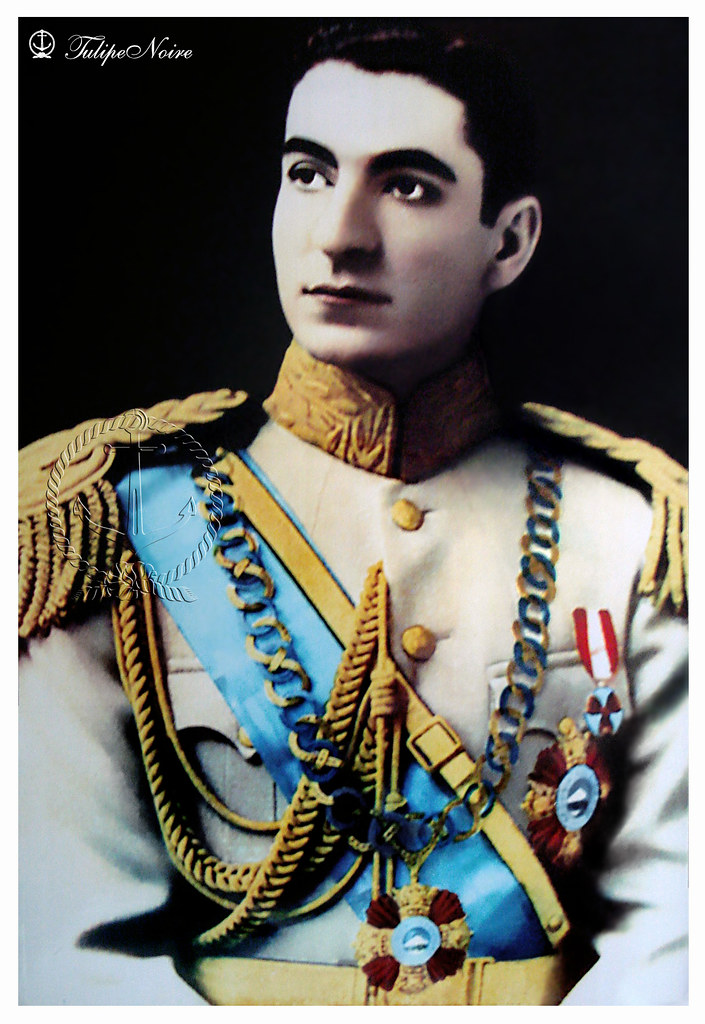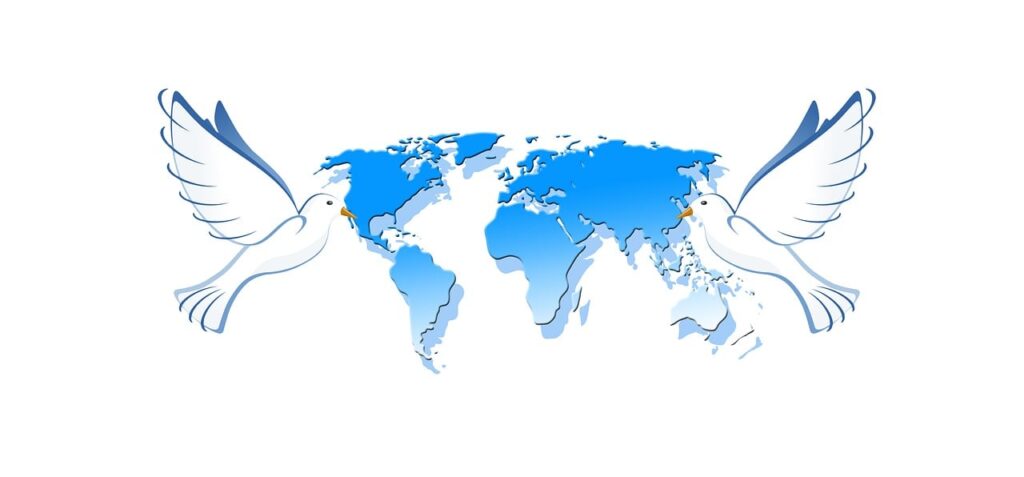
When you think of the 1970s, what usually comes to mind? Maybe it’s the iconic disco beats that had everyone grooving, the bell-bottoms, or perhaps the groovy vibes of a rapidly changing world. But beneath the surface of all that fantastic funk and flair, the ’70s were a hotbed of jaw-dropping scandals, earth-shattering events, and political dramas that often felt like they were ripped straight from a blockbuster movie script.
This decade was truly a ‘pivot of change’ in world history, marked by economic upheavals, frequent coups, and intense conflicts. It was a time when the world population surged, social values shifted, and technology started hinting at the future. But for every step forward, there seemed to be a dramatic twist, a shocking revelation, or a profound tragedy that redefined what we thought possible.
So, buckle up, because we’re taking a deep dive into 14 of the most unbelievable scandals and seismic events of the ’70s. These aren’t just dry historical facts; these are the stories that captured global attention, shook the foundations of power, and left an indelible mark on history. Prepare to have your mind blown by how wild the ’70s really were!

1. **Richard Nixon and the Watergate Scandal**
Remember when we said things were wild? Few political dramas can compare to the sheer scale of the Watergate scandal, which ultimately led to the resignation of U.S. President Richard Nixon on August 9, 1974. This wasn’t just a minor political blunder; it was a constitutional crisis that gripped the United States and fascinated the world.
The scandal centered on a break-in at the Democratic National Committee headquarters at the Watergate Office Building in June 1972 and the Nixon administration’s subsequent attempts to cover up its involvement. What started as a seemingly small crime spiraled into a massive investigation, revealing an intricate web of political espionage, illegal wiretapping, and obstruction of justice at the highest levels of government.
As the evidence mounted, impeachment charges loomed, forcing Nixon to become the first and only U.S. President to resign from office. His iconic V-for-Victory sign as he departed the White House captured a moment of both defiance and defeat, marking a profound shift in American politics and public trust in institutions. It was a scandal that redefined political accountability forever.
Read more about: 12 Defining ’70s Moments That Shaped Our World (And What Vanished Along The Way!)

2. **Jim Jones and the Jonestown Mass Suicide**
From political intrigue to something far more sinister, the events surrounding the Reverend Jim Jones and his People’s Temple commune in Guyana are nothing short of horrifying. In November 1978, this story unfolded with a chilling climax that continues to shock decades later, making it one of the ’70s’ most disturbing sagas.
Jones had led several hundred followers from California to create a self-proclaimed Utopian Marxist commune named Jonestown in the Guyanese jungle. However, paradise quickly turned into a nightmare under his increasingly totalitarian control. Allegations surfaced regarding widespread corruption, as well as mental, sexual, and physical abuse inflicted by Jones on his followers, who were also denied the right to leave.
A Congressional committee and journalists visited Guyana to investigate these dire claims. Tragically, as the visitors and several defectors attempted to depart, Jones’ guards attacked and shot them at the airport, killing Congressman Leo Ryan among others. In a demented response, Jones then ordered everyone in the commune to commit suicide, leading to a horrific scene where over 900 people, approximately one-third of whom were children, drank or were forced to drink cyanide-laced fruit punch.
Read more about: Remember the ’70s? 12 Wild Events and Trends That Were SO Everywhere, They Practically Lived in Our Living Rooms!

3. **Idi Amin’s Reign of Terror in Uganda**
Shifting our gaze to Africa, the 1970s bore witness to the brutal dictatorship of Idi Amin, President of Uganda from 1971 to 1979. His rise to power through a military coup was just the beginning of a truly terrifying regime, making his actions a shocking and unforgettable scandal on a global scale.
Amin’s rule was characterized by extreme brutality, as he systematically persecuted any opposition to his authority. Beyond political repression, he pursued a racist agenda, notably expelling Asians from Uganda, particularly those of Indian descent who had settled there during British colonial rule. His actions plunged the nation into chaos and suffering.
In 1978, Amin further escalated regional tensions by initiating the Ugandan–Tanzanian War, aligning with Libya in an expansionist bid to annex territory from Tanzania. This ill-fated conflict ultimately led to Uganda’s defeat and Amin’s overthrow in 1979, ending a dark chapter in the country’s history. His regime remains a stark reminder of the devastating consequences of unchecked power.
Read more about: From the Headlines to History Books: 13 ’70s Figures Whose Legacies Took Wildly Unexpected Turns!
4. **The Iranian Revolution and Hostage Crisis**
Talk about a turning point! The 1979 Iranian Revolution dramatically transformed Iran from an autocratic pro-Western monarchy under Shah Mohammad Reza Pahlavi to a theocratic Islamist government led by Ayatollah Ruhollah Khomeini. This wasn’t just a change in leadership; it was a seismic shift that reverberated across the globe.
The revolution rapidly altered Iran’s international relations, particularly with Western powers. Distrust between the new revolutionary government and the West quickly escalated, leading to one of the most intense international standoffs of the decade: the Iran hostage crisis. On November 4, 1979, a group of Iranian students, supporting the revolution, stormed the U.S. Embassy in Tehran.
They held 66 diplomats, mainly from the United States, captive for an astonishing 444 days. This act of defiance captivated the world’s attention, symbolizing the profound clash between the new Islamic republic and its declared hostility towards both Western democracy and what it termed ‘godless communism.’ It was a truly unprecedented challenge to international diplomatic norms.
Read more about: 12 Defining ’70s Moments That Shaped Our World (And What Vanished Along The Way!)

5. **The Overthrow of Shah Mohammad Reza Pahlavi**
To truly understand the Iranian Revolution, we need to look at the figure it ousted: Shah Mohammad Reza Pahlavi. His autocratic pro-Western monarchy had been the dominant power in Iran for decades, and its dramatic overthrow in 1979 was a scandal of power dynamics, demonstrating how quickly even seemingly entrenched leaders can fall.
The Shah’s regime, despite its modernization efforts, faced growing internal dissent due to its authoritarian rule, perceived corruption, and alignment with Western interests. The revolutionary movement, fueled by widespread dissatisfaction and a powerful religious leadership, steadily gained momentum, culminating in mass protests and widespread unrest across the country.
Ultimately, the pressure became insurmountable. The Shah was forced to leave Iran, paving the way for Ayatollah Ruhollah Khomeini’s return from exile and the establishment of the Islamic Republic. His downfall marked the end of a long-standing dynasty and represented a colossal shift in the geopolitical landscape of the Middle East, challenging the balance of power established after World War II.
Read more about: 12 Defining ’70s Moments That Shaped Our World (And What Vanished Along The Way!)

6. **Augusto Pinochet’s Coup in Chile**
Another major political earthquake of the 1970s struck Chile on September 11, 1973. This was the day a brutal military coup d’état, led by General Augusto Pinochet, overthrew the country’s democratically elected Socialist president, Salvador Allende. It was a dramatic and violent seizure of power that sent shockwaves across Latin America and beyond.
The coup involved a military attack on the presidential palace, during which Salvador Allende was overthrown and tragically killed. With the backing of the military junta, Pinochet swiftly consolidated power, establishing himself as a dictator. The involvement of the Central Intelligence Agency (CIA) of the United States in assisting the coup later became a subject of intense controversy and scrutiny.
Pinochet’s regime was marked by severe human rights abuses, political repression, and economic restructuring, fundamentally altering Chile’s trajectory. He remained the iron-fisted ruler of Chile until 1990. The events of September 11, 1973, serve as a stark reminder of the fragility of democracy and the dark forces that can undermine it, leaving a legacy of pain and debate for decades to come.
Read more about: From the Headlines to History Books: 13 ’70s Figures Whose Legacies Took Wildly Unexpected Turns!
7. **The Yom Kippur War and the Camp David Accords**
You might think the ’70s were all about bell-bottoms and disco, but let’s not forget the high-stakes international dramas! In October 1973, the Middle East ignited with the Yom Kippur War. Egypt and Syria launched a surprise attack on Israel, aiming to reclaim territories lost in the 1967 conflict. Talk about a shocker that caught everyone off guard and sent geopolitical tremors around the globe!
This wasn’t just a skirmish; it was a full-blown war pushing the Israelis to their limits. They initially suffered heavy losses before rallying their forces. In a stunning display of military prowess, they managed to repel the Egyptian and Syrian assaults and even crossed the Suez Canal into Egypt itself. It was a tense standoff that underscored the deep-seated conflicts in the region, keeping the world on edge.
But here’s where the ’70s delivered a twist straight out of a political thriller: years later, in 1978, a glimmer of hope emerged. Egypt, under President Anwar Sadat, made a monumental decision to sign a peace treaty with Israel at Camp David in the United States. This wasn’t just a handshake; it was a groundbreaking agreement that aimed to end the long-standing disputes between the two nations, shifting the dynamics of the entire Middle East.
This peace treaty was a massive deal, earning Sadat and Israeli Prime Minister Menachem Begin the 1978 Nobel Peace Prize. It was a bold move that dramatically altered the narrative of conflict, proving that even the most entrenched enemies could find a path to dialogue. While Sadat’s actions sadly led to his assassination in 1981, the Camp David Accords stood as a testament to the power of diplomacy, offering a beacon of hope in a turbulent decade.
Read more about: Beyond the Disco: Unearthing the Pivotal Events and Enduring Legacies That Shaped the 1970s
8. **The Bangladesh Liberation War and Genocide**
If you thought the ’70s couldn’t get more intense, think again. South Asia became the stage for a truly devastating crisis: the 1971 Bangladesh Liberation War. This wasn’t just a conflict; it was a brutal struggle for independence that unleashed unspeakable horrors, marking one of the deadliest humanitarian disasters of the entire decade.
The roots of this war lay in East Pakistan (what is now Bangladesh) where a fierce independence movement was gaining traction. The Pakistan Armed Forces responded with shocking brutality, committing what is now recognized as the 1971 Bangladesh genocide. We’re talking about a horrific campaign to curb these independence movements, resulting in the deaths of an estimated 300,000 to 3,000,000 people. Can you even imagine that scale of suffering?
This intense internal conflict quickly escalated into a full-blown international war, drawing India into the fray. India’s involvement transformed the struggle, providing crucial support to the East Pakistani forces. The fighting was fierce and relentless, ultimately defeating the West Pakistani army. This led to the official liberation of East Pakistan, which proudly emerged as independent Bangladesh.
The surrender agreement signed by Pakistan Army General A. A. K. Niazi to India’s Lieutenant General Jagjit Singh Aurora was monumental. It symbolized not only the end of a bloody war but also the birth of a new nation and the profound human cost of political oppression. The legacy of the Bangladesh Liberation War and its associated genocide remains a stark reminder of the ’70s capacity for both immense suffering and the ultimate triumph of self-determination.
Read more about: 12 Defining ’70s Moments That Shaped Our World (And What Vanished Along The Way!)

9. **The 1973 Oil Crisis**
Beyond the political shake-ups and humanitarian crises, the ’70s also hit us where it hurt: our wallets. Get ready for the 1973 oil crisis, an economic earthquake that sent shockwaves across the globe, forever changing how we thought about energy. This wasn’t just a hiccup; it was a full-blown financial crisis that gripped the developed world, sparking a mad scramble for gasoline and changing daily life for millions.
What happened? The Organization of Arab Petroleum Exporting Countries (OPEC) decided to impose an oil embargo. This strategic move was a direct response to geopolitical tensions, particularly the Yom Kippur War we just talked about. Suddenly, the taps tightened, supply dwindled, and oil prices skyrocketed. For countries heavily reliant on imported oil, this was a devastating blow, triggering an immediate and severe economic downturn.
The crisis introduced a term that became all too familiar: stagflation. This nasty economic cocktail combined stagnant economic growth with high inflation and unemployment. Think about that for a second: rising prices and job losses, all at once! It was a phenomenon that challenged conventional economic theories and left policymakers scrambling for solutions, fundamentally altering global economic thinking.
The 1973 oil crisis wasn’t just a blip; it initiated a significant political and economic trend, marking the beginning of the replacement of Keynesian economic theory with neoliberal economic theory. It pushed countries to rethink energy policies, explore alternative sources, and understand the deep interdependence of global economies. This decade-defining event reshaped industries, fueled innovation, and taught us some harsh lessons about resource dependency, leaving an undeniable mark on the global economic landscape.
Read more about: Talk About Bad Luck: 10 Movies Where the Cast Faced Secret Tragedies We Only Realized Later

10. **Haile Selassie’s Overthrow and the Ethiopian Civil War**
From one corner of the world to another, the 1970s kept delivering dramatic power shifts. Picture this: one of the longest-lasting monarchies in world history, ruling Ethiopia for centuries, suddenly crumbles. That’s exactly what happened with Emperor Haile Selassie’s downfall in 1974, marking an authoritarian power grab that plunged the nation into prolonged and devastating civil war.
Haile Selassie, an iconic figure with a nearly fifty-year reign, symbolized Ethiopian independence and African dignity for many. However, his rule faced mounting internal pressures, including famine, economic stagnation, and increasing dissent against the imperial system. The military, sensing shifting tides, seized the opportunity to stage a coup. This wasn’t peaceful; it was a forceful overthrow led by a communist junta.
The military coup was spearheaded by figures like General Aman Andom and Mengistu Haile Mariam. They deposed the emperor, effectively ending a dynasty that had spanned generations. The new regime, known as the Derg, quickly consolidated its power through brutal repression and purges. This dramatic shift was a clear example of the ’70s tendency for sudden, violent changes in leadership, especially in decolonizing nations.
However, the overthrow of Selassie wasn’t the end of Ethiopia’s troubles; it was merely the beginning of the Ethiopian Civil War (1974–1991). The Derg’s authoritarian rule and Marxist-Leninist ideology sparked widespread resistance and regional conflicts, leading to years of bloodshed and instability. This saga underscores how authoritarian power grabs often lead to long-term strife, transforming nations and impacting generations.
Read more about: The Ephemeral Spotlight: 12 ’70s Teen Idols Who Shined Brightly, Then Faded from the Global Stage

11. **The Munich Massacre**
Alright, let’s talk about one of the most chilling and unforgettable acts of terrorism to ever rock the global stage, casting a dark shadow over what should have been a celebration of peace and sport. We’re zooming into September 1972, at the Summer Olympics in Munich, Germany, where joy tragically turned into horror with the infamous Munich massacre. It was a shocking event that captivated and horrified the world.
During the Games, a Palestinian terrorist group known as Black September organization infiltrated the Olympic Village. Their target: Israeli athletes. They kidnapped and ultimately murdered eleven Israeli Olympic team members. This wasn’t just an attack on individuals; it was an assault on the very spirit of the Olympics, a global spectacle meant to unite nations through friendly competition. The world watched in disbelief as the crisis unfolded.
The incident was a stark and brutal reminder of how geopolitical conflicts could spill over into seemingly safe, neutral spaces. The images of masked figures on the balcony, the intense negotiations, and the tragic outcome were etched into collective memory. It forced a global reckoning with international terrorism and prompted significant changes in security protocols for major international events.
The Munich massacre, sadly, also highlighted the rise of militant organizations and the increased use of terrorism as a political tool throughout the ’70s. Groups like Europe’s Red Brigades and the Baader-Meinhof Gang, even radical American groups like the Weather Underground, were responsible for a spate of bombings, kidnappings, and murders. It was a dark, unsettling trend that showed the decade’s capacity for calculated violence and its lasting impact on global security.
Read more about: 12 Defining ’70s Moments That Shaped Our World (And What Vanished Along The Way!)
12. **The October Crisis in Quebec**
You might associate the ’70s with international upheavals, but some of the most intense dramas played out closer to home, even in countries known for their stability. Take Canada, for instance, which experienced its own “what just happened?!” moment during the 1970 October Crisis. This wasn’t a movie plot; it was a real-life political bombshell that rattled the nation and brought martial law to Canadian streets.
In Quebec, radical nationalist and Marxist militants from the Front de libération du Québec (FLQ) decided to turn up the heat. They kidnapped two high-profile figures: Quebec labor minister Pierre Laporte and British Trade Commissioner James Cross. Can you imagine the panic? A democratic government suddenly facing armed extremists holding political hostages. It was a crisis that escalated quickly, putting everyone on edge.
The situation became so dire that the Canadian government, under Prime Minister Pierre Elliott Trudeau, took an unprecedented step: enacting the War Measures Act. This meant declaring martial law across the country, particularly in Quebec. Suddenly, civil liberties were curtailed, and the army deployed. It was a controversial move, but it demonstrated the government’s resolve to address what it perceived as a serious threat to national security.
Tragically, Pierre Laporte was killed during the crisis, adding a devastating layer to the already tense situation. While James Cross was eventually released, the October Crisis left an indelible mark on Canada. It sparked intense debates about civil liberties, national unity, and separatism’s role in a diverse country. The subsequent election of the Parti Québécois, committed to Quebec independence, showed the lasting political impact of these dramatic ’70s events.
Read more about: Russia’s Nuclear Calculus: Assessing the Escalation Risk Amidst Global Tensions and Doctrine Shifts

13. **Saddam Hussein’s Rise to Power in Iraq**
Okay, let’s shift our focus to another monumental power grab that would profoundly shape the future of the Middle East. The 1970s saw Saddam Hussein’s calculated and ruthless ascent in Iraq, a figure whose name would later become synonymous with authoritarian rule and regional conflict. This wasn’t a celebrity scandal, but a political drama with blockbuster-level consequences, cementing his influence in a strategically vital region.
Saddam Hussein’s journey to absolute power wasn’t an overnight affair. He meticulously worked his way up through the ranks of the Ba’ath Party, gradually consolidating his authority and influence. He played a key role in modernizing Iraq, taking significant steps to remove the Western monopoly on oil. This strategic move proved incredibly lucrative, especially with high oil prices from the 1973 oil crisis, funding his ambitious plans for the nation.
His carefully orchestrated rise culminated on July 16, 1979, when he officially assumed the presidency. This wasn’t just a change of leadership; it was the final step in cementing his unchallengeable grip on power, transforming Iraq into a personal fiefdom. His presidency immediately led to the breaking off of a potential Syrian-Iraqi unification, a plan that had been pursued under his predecessor, Ahmed Hassan al-Bakr.
Saddam’s authoritarian control would define Iraq for decades, leading to the devastating Iran–Iraq War in the 1980s and countless other regional conflicts. His rise in the ’70s serves as a chilling example of how individual ambition, coupled with geopolitical opportunism, can dramatically alter the course of history. It highlights how the decade was ripe for strongmen to seize control, leaving a legacy of profound and often tragic global impact.
Read more about: Unveiling the Shadow Warriors: Inside the Secret World of Navy SEALs and Their Unmatched Legacy

14. **The Soviet Invasion of Afghanistan**
Just when you thought the ’70s were winding down, they dropped one last bombshell that reverberated into the next decade. We’re talking about the Soviet invasion of Afghanistan in December 1979, an international crisis that effectively slammed the brakes on the era of détente and set the stage for a new, icy chapter of the Cold War. Talk about ending the decade with a bang!
For much of the ’70s, the world had seen a cooling of superpower tensions, a policy known as détente, where the U.S. and the Soviet Union tried to resolve issues through negotiation. But the Soviet decision to roll tanks into Afghanistan abruptly shattered that fragile peace. They intervened to prop up a struggling communist government, hoping to secure influence in a strategically important neighboring country.
This wasn’t just a regional conflict; it was a clear demonstration of Soviet expansionism and a significant authoritarian power grab, igniting widespread condemnation from the international community. The United States, under President Jimmy Carter, reacted swiftly and forcefully, leading to a boycott of the 1980 Moscow Olympics and providing covert support to Afghan resistance fighters, the Mujahideen.
The Soviet-Afghan War, though primarily fought throughout the 1980s, began at the tail end of the ’70s, making it a pivotal scandal that reshaped global politics. It drained Soviet resources, fueled anti-Soviet sentiment, and indirectly contributed to the USSR’s eventual collapse. This event proved that even in an era of supposed diplomatic easing, the Cold War’s underlying tensions were always ready to flare up, leaving a lasting legacy of superpower rivalry and proxy conflicts.
Read more about: Decoding the USA: An Engineering Perspective on America’s Foundational Systems
And there you have it, folks – a whirlwind tour through the ’70s, a decade that truly redefined “unforgettable.” From political chess matches that shook the Oval Office to brutal regimes that reshaped nations, and from economic crises that emptied gas tanks to acts of terror that stole headlines, the ’70s proved to be a masterclass in drama. It wasn’t just disco and denim; it was a pivot point in history, a time when the world was perpetually on the brink, constantly surprising us with its capacity for both chaos and profound change. These events weren’t just headlines; they were moments that forged the world we live in today, proving that sometimes, the wildest stories aren’t found in fiction, but in the pages of history itself. So, next time you put on a ’70s playlist, remember that beneath the groovy beats, there was a whole lot more shaking than just a dance floor!







